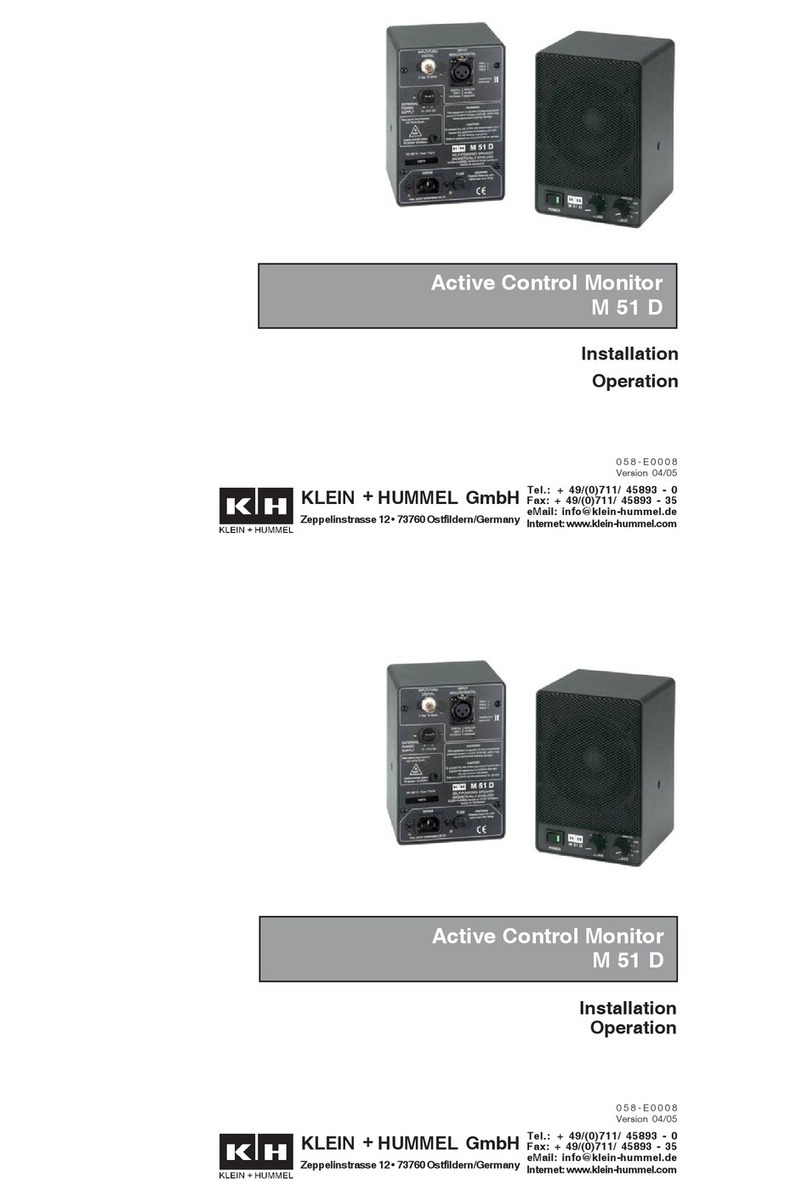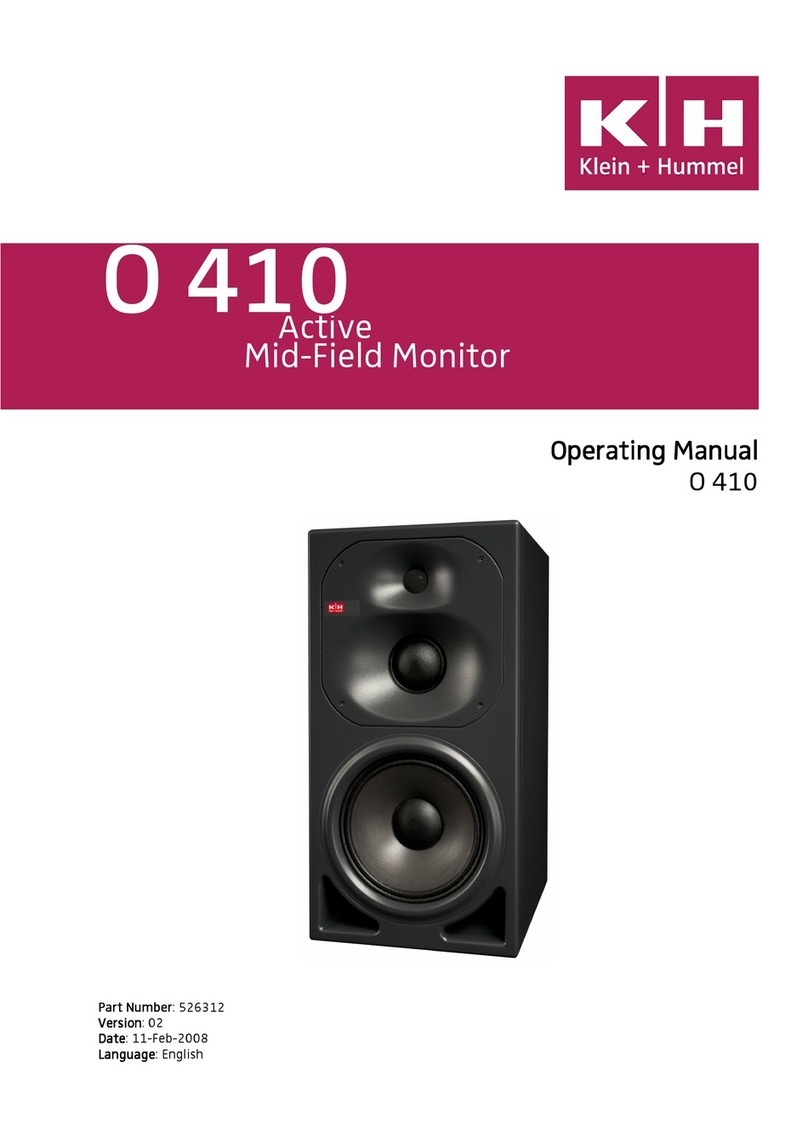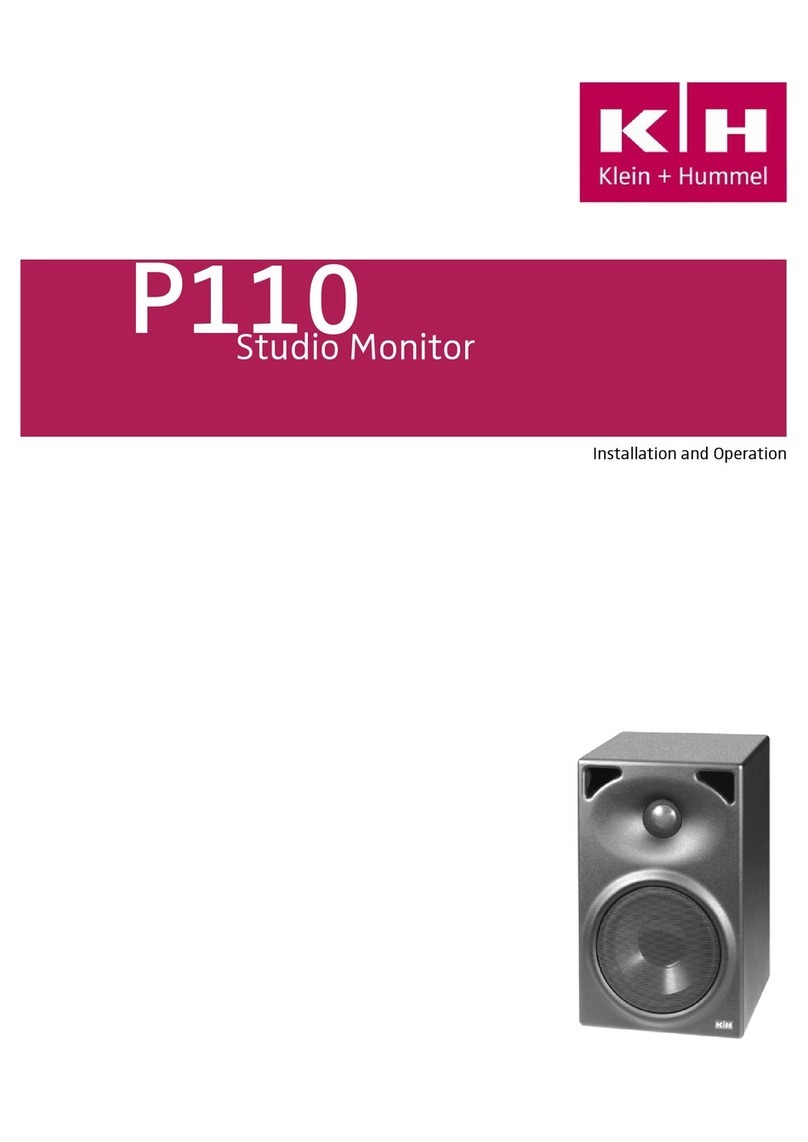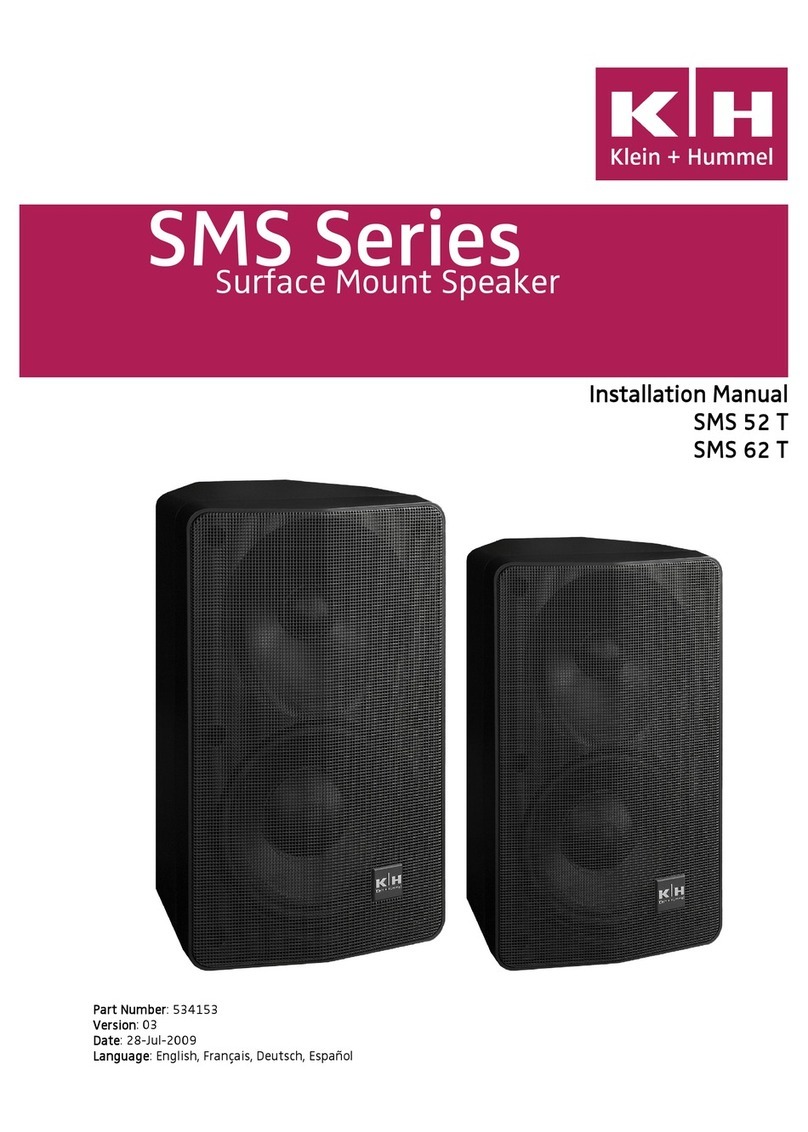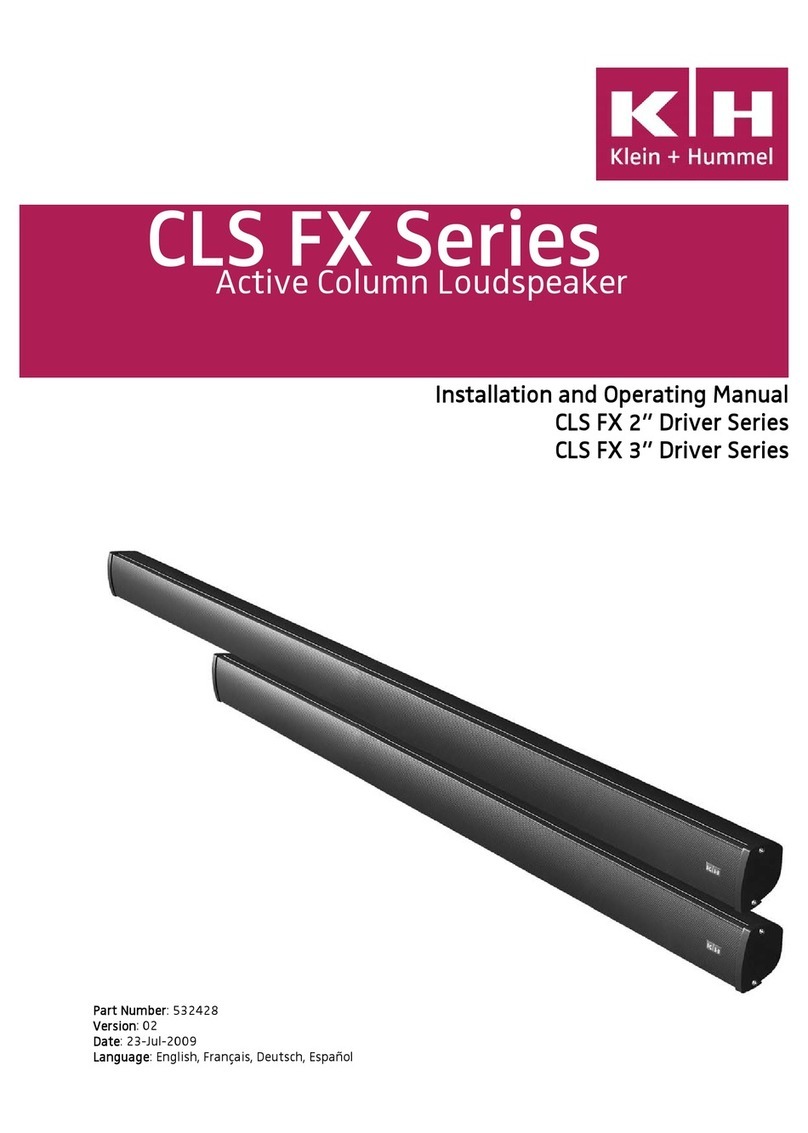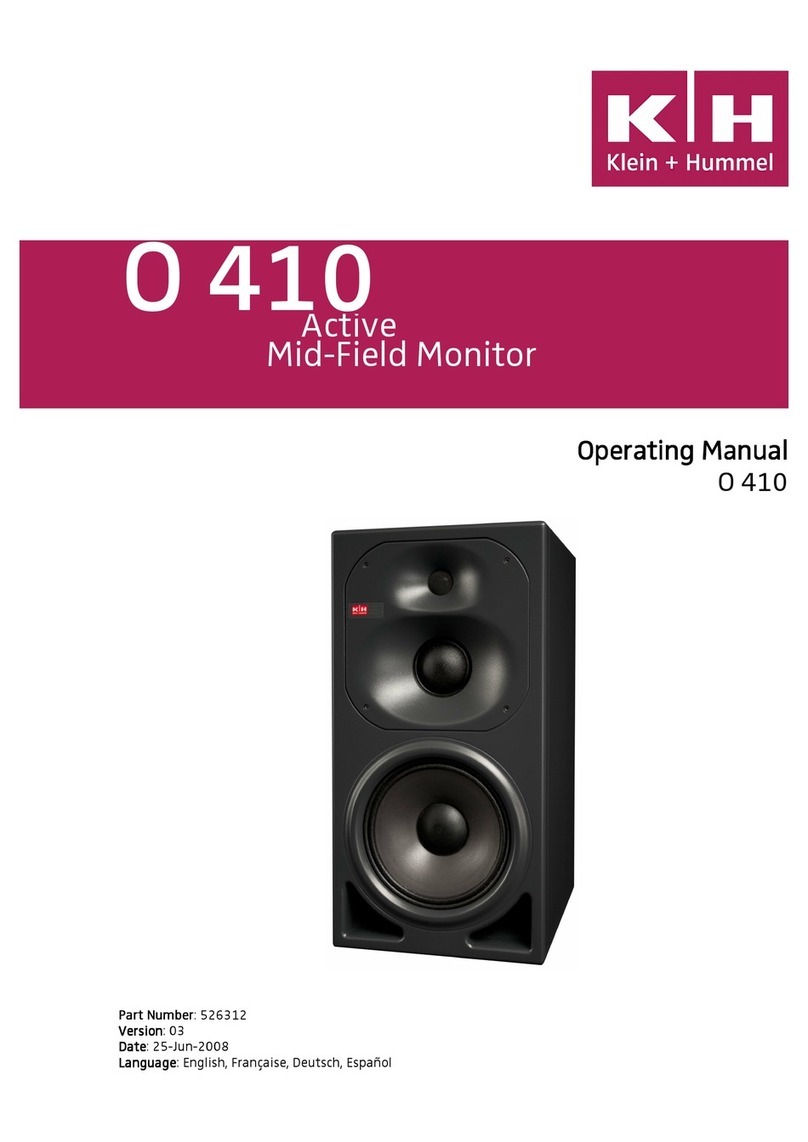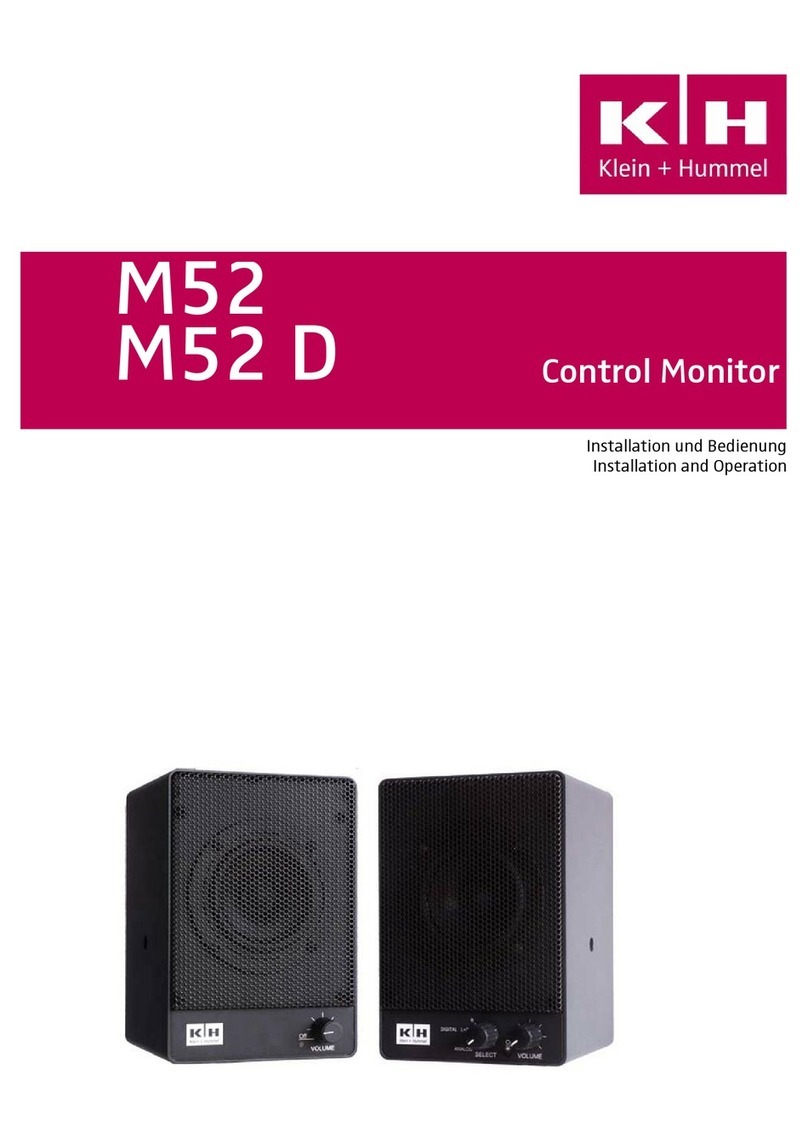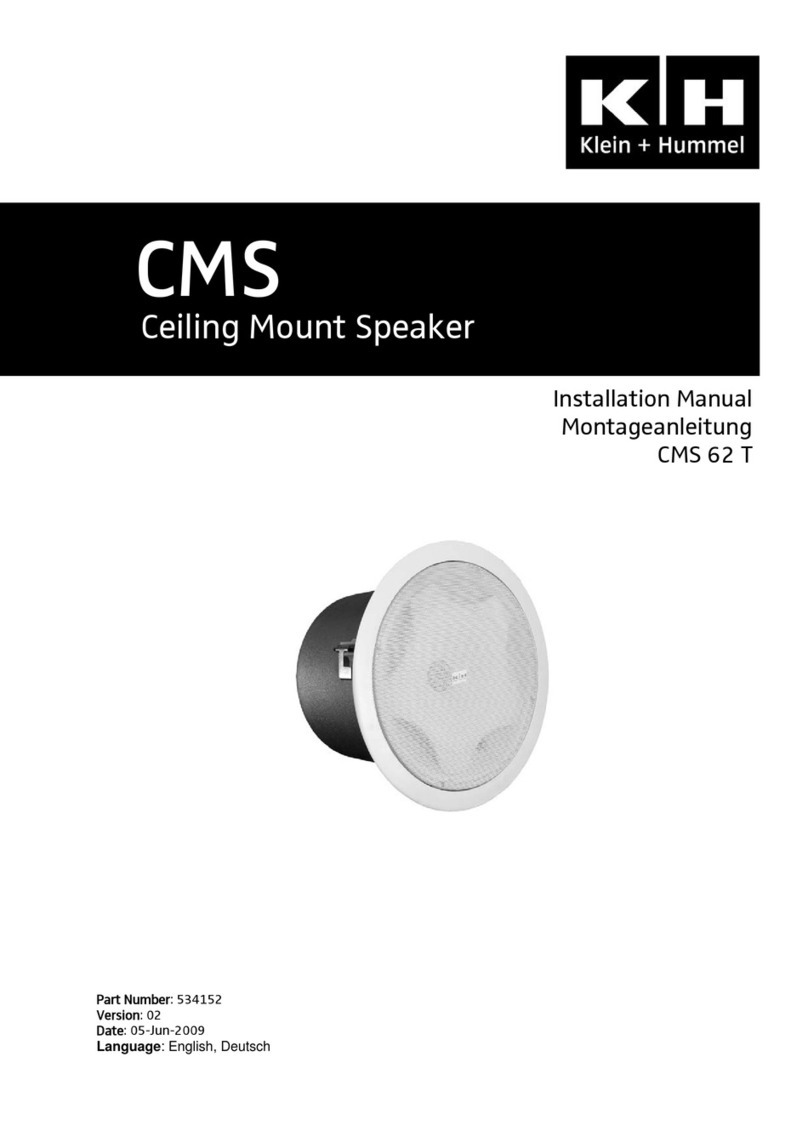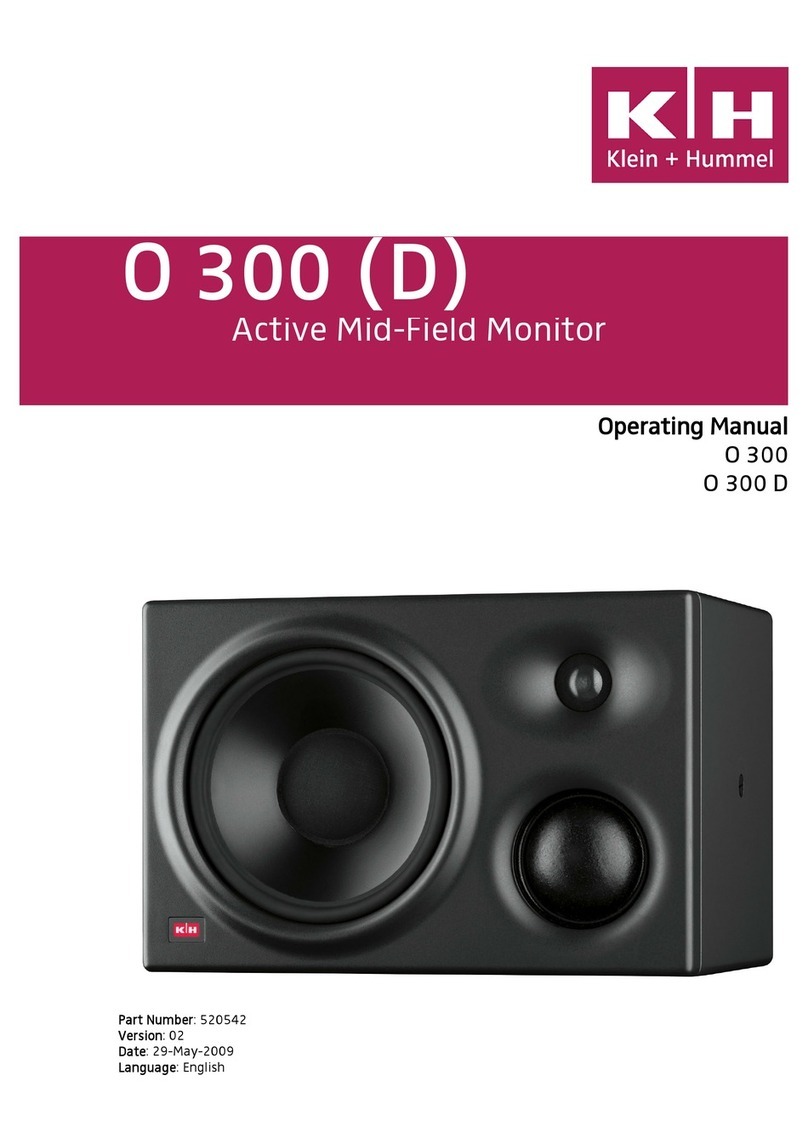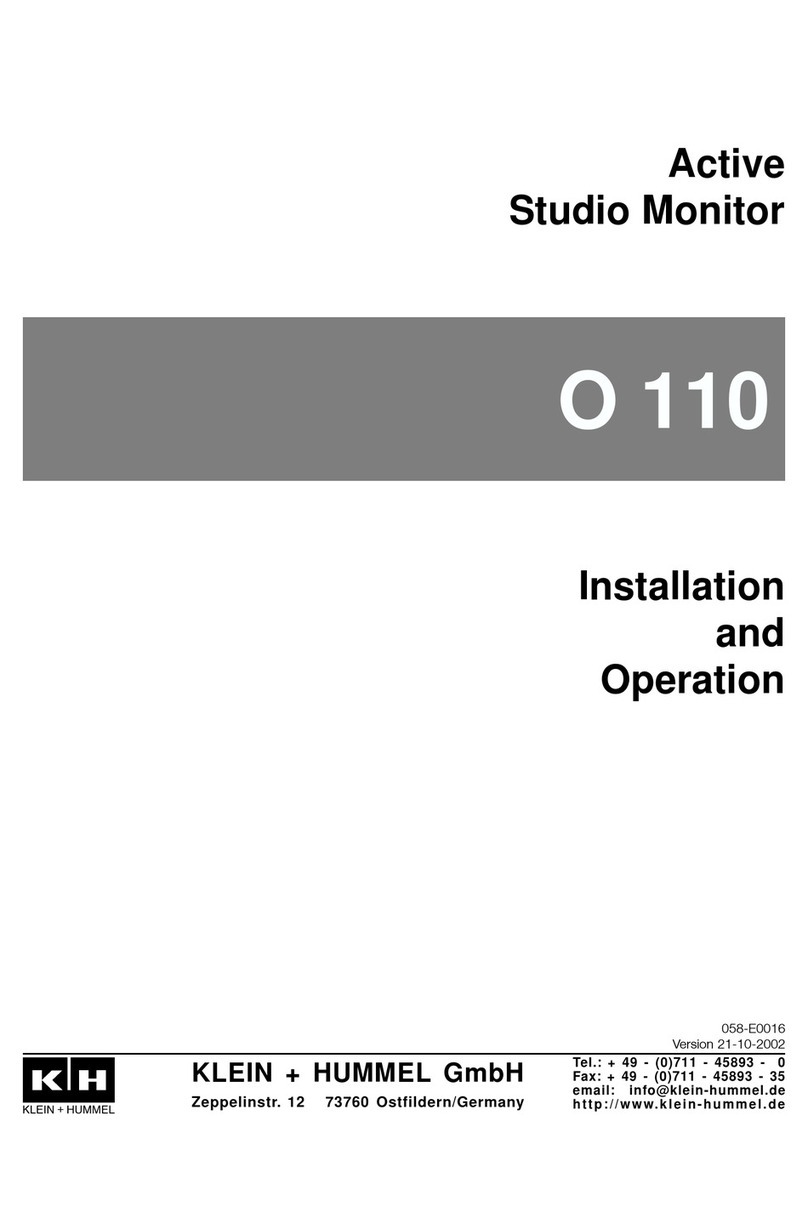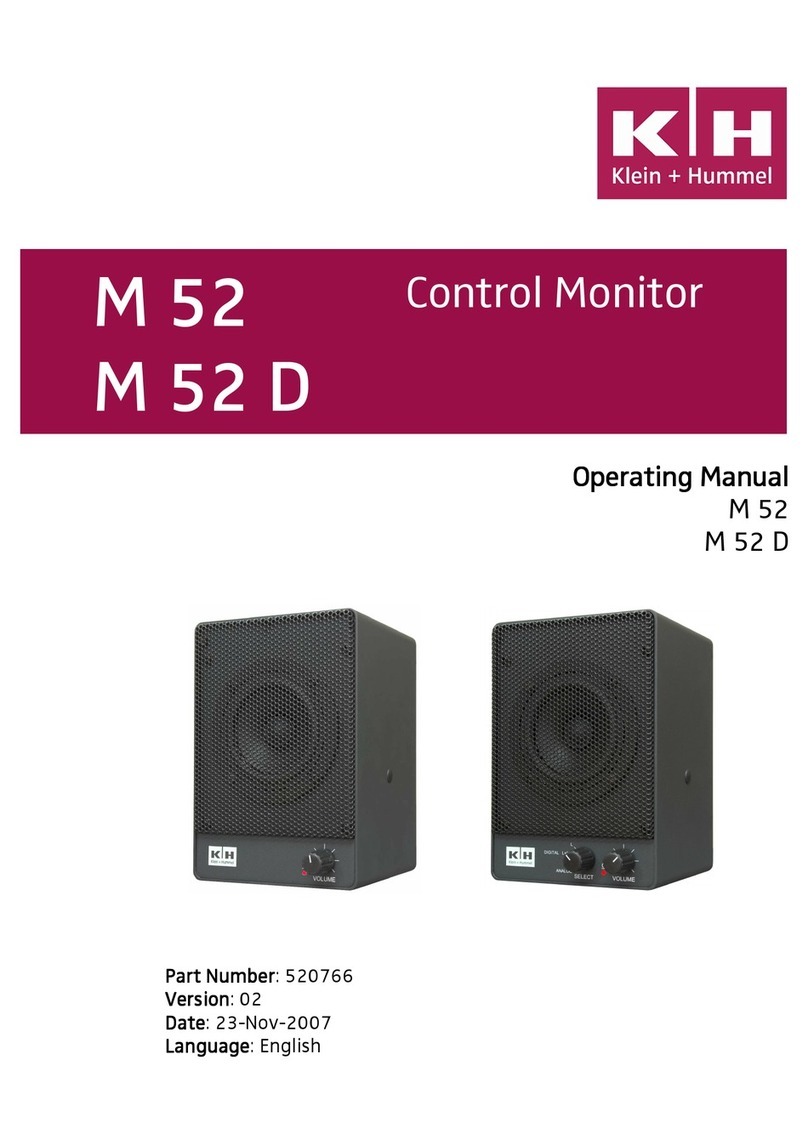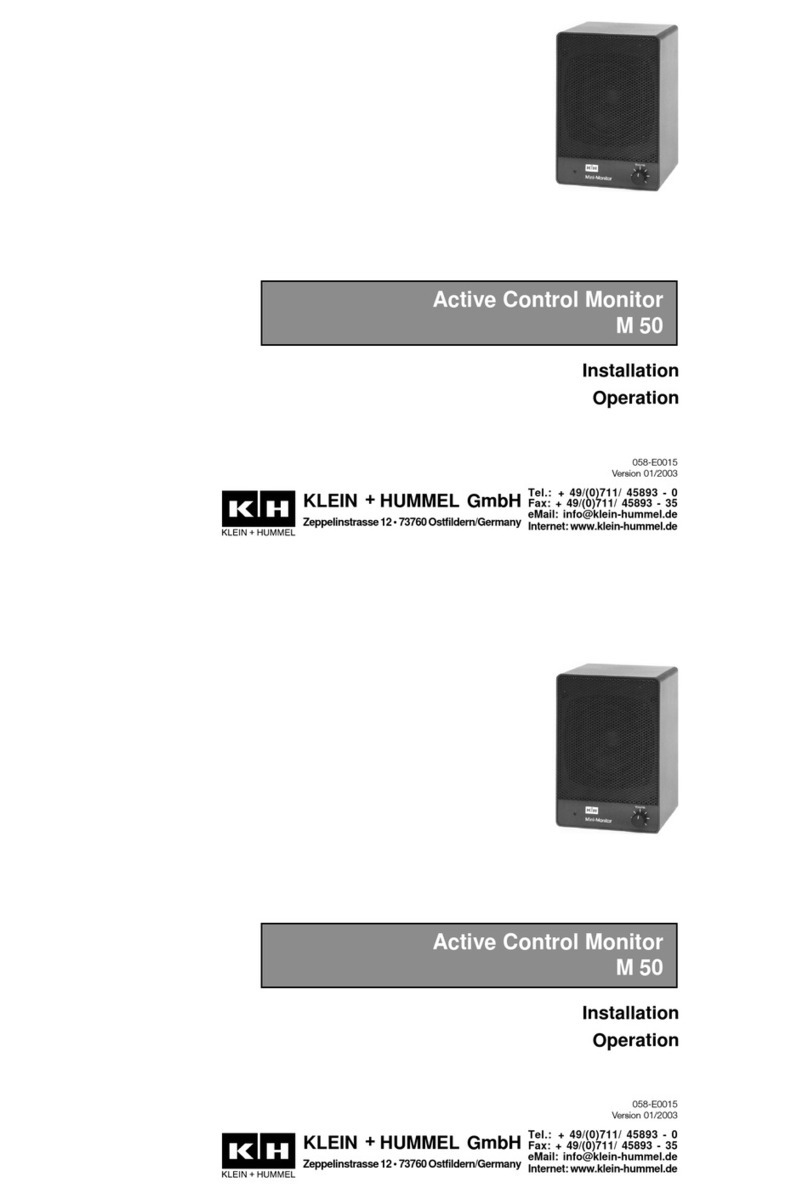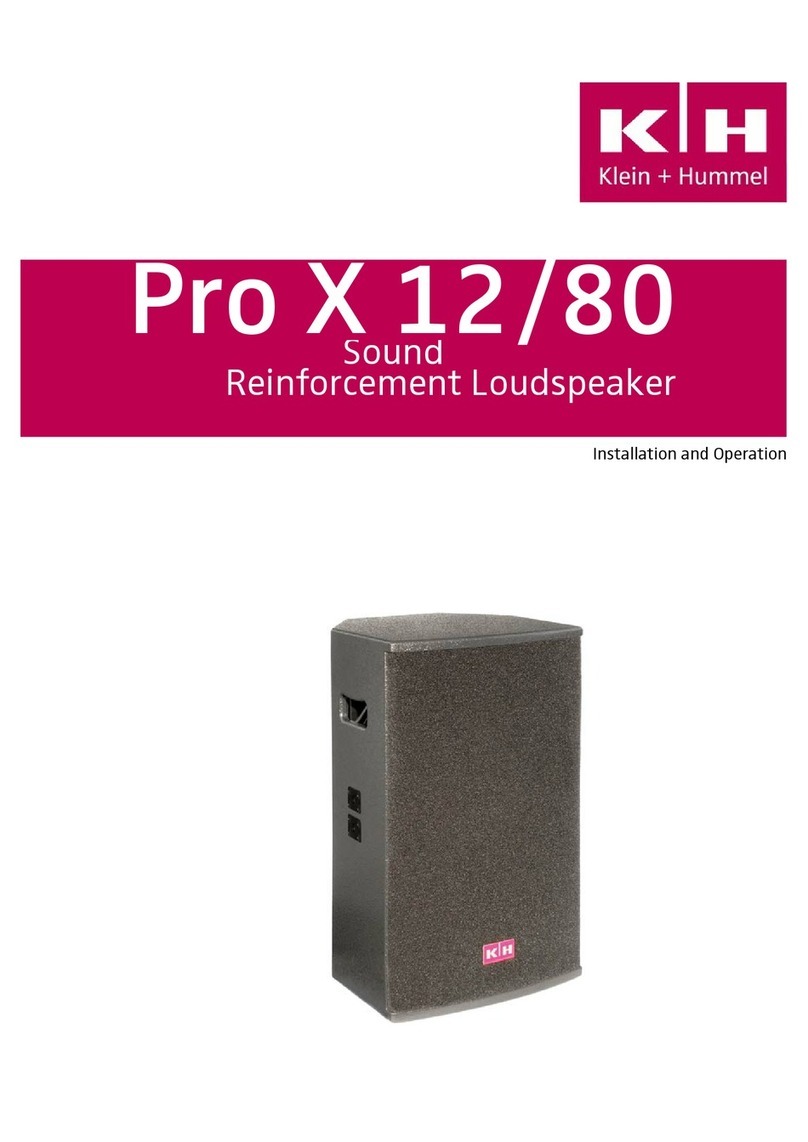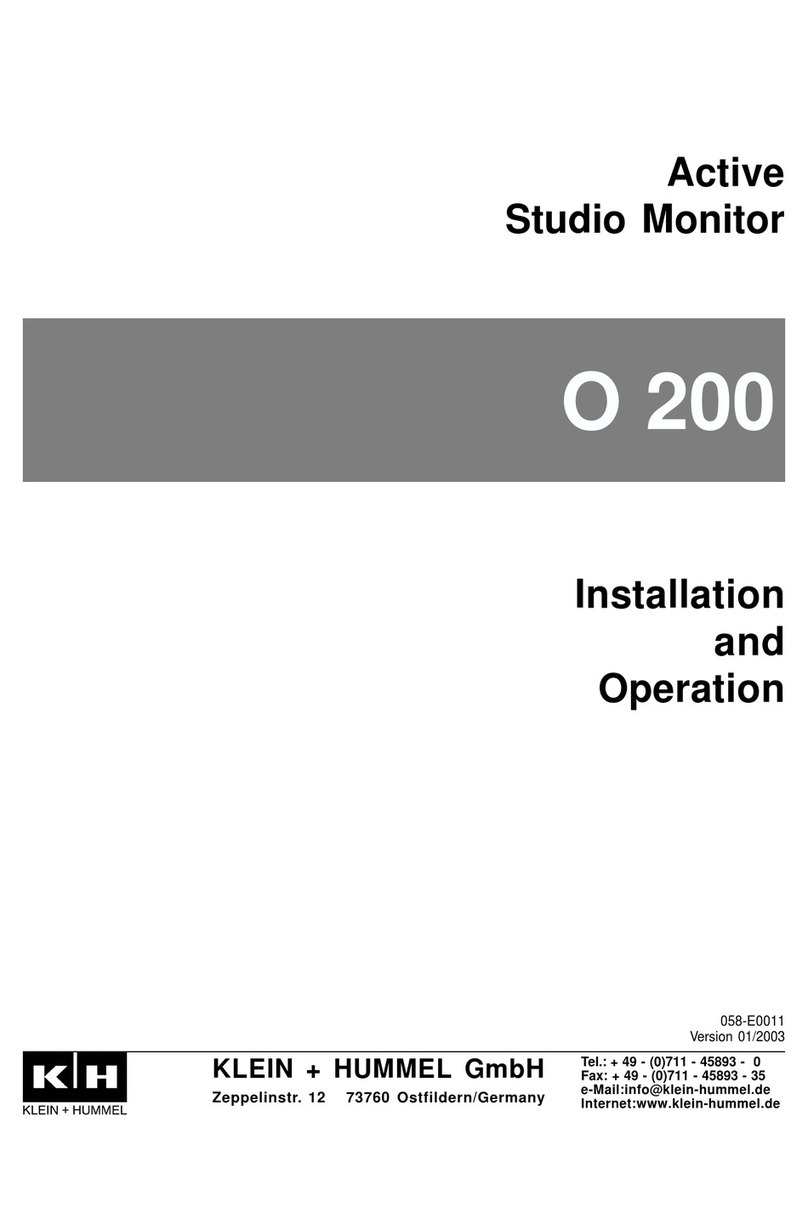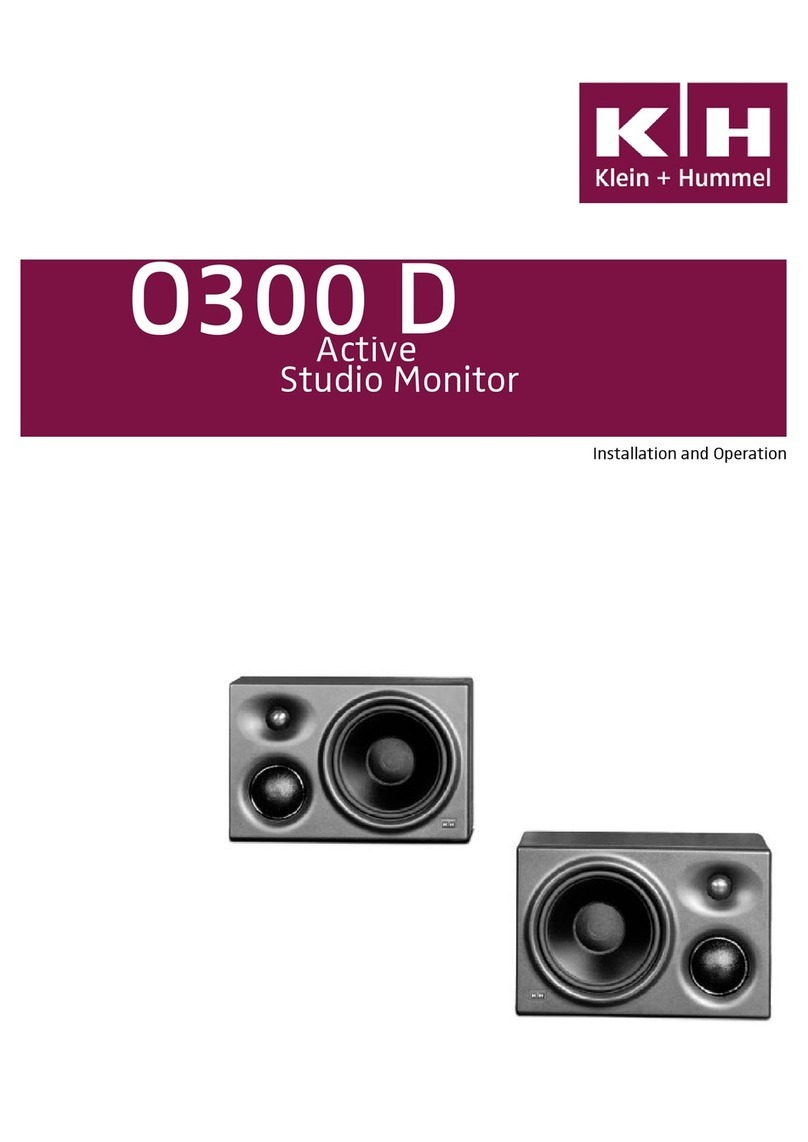Page 4 Active Studio Monitor O 300 D
1. Installation and Operation
1.1 It is absolutely essential that you read
and observe the Safety Instructions on
page 2 before connecting or using this
device.
1.2 Operating conditions
The K+H model O 300 D active studio monitor
is intended for use over a range of ambient
temperatures from +10° C to +40° C (+50° F to
+104° F). During transport or storage,
temperatures from -25° C to +70° C (-13° F to
158° F) are permissible.
1.3 Speaker placement
The loudspeaker chassis used in the O 300 D
aremagnetically shielded,so youarefree toset
thespeakersrightnext to avideomonitorwithout
needing to worry about adversely affecting the
screen. Furthermore, the baffle of the O 300 D
is designed in such a way as to disperse the
soundvery evenlynot just onaxis butoverquite
awide listening area. Any engineer who hassat
ataconsole foranylength of timewillappreciate
theconsiderable freedom ofmovementafforded
bytheO300D.The cabinetis normallydesigned
to be used in the horizontal position, as the
verticalangleofdispersionhasintentionallybeen
madenarrowerthan the horizontal.Thecabinets
are constructed in a left version and a right
version. For best stereo imaging and depth of
soundstage, position the cabinets with the
tweeters on the outside, at ear height, pointing
directly at the listening position. If you use the
O 300 D as a center speaker, set the cabinet
vertically, with the tweeter and midrange dome
atthe top.
In certain applications where there are hard
reflectivesurfaces immediately totheleft orright
of the speakers, it may make more sense to set
the cabinets vertically, in which case the
narrower dispersion pattern will help reduce
comb-filter effects.
When choosing a location for the speakers, be
aware that you can take advantage of the inte-
gralroom-compensating equalizer, whichwillbe
described in detail in section 1.7.5 .
The cabinet can be mounted directly to a wall or
ceiling with the aid of the LH 25 mounting
bracket.On theleftand right sidesofthe cabinet
youwillfindthreaded bushingsof 8mmdiameter
to which this bracket attaches. As an alternati-
ve,you canuse theLH 28 stand-mountadapter
to set the speaker on a standard 35-mm
(1-3/8”) tripod.
Please make certain that these two threaded
openings are always sealed, either with the
plastic plugs that come standard with the
cabinetsorwith the screwsholdingthemounting
adapterinplace. Otherwiseyoumayexperience
some air noise and possibly some degradation
in low-frequency response.
1.4 MAINS Connection
The amplifier electronics of the standard
Europeanmodelaresetupfor an ACline voltage
of 230 volts, 50 or 60 Hz. Export versions with
other voltages are also available. If the power
plug of the mains cable should ever need to be
replaced, ensure that the connection to the
protective earth is maintained.
1.5 MAINS Switch (POWER)
When you switch on power to the unit, there is a
five-second delay before the amplified signal is
sent to the drivers. This delay avoids the loud
popping sounds that otherwise may be
generated by devices earlier in the signal chain
as power reaches them. You will find this
arrangement particularly useful if your studio
uses a master switch to power up all the
equipmentatonce. Whenpoweronthe O 300 D
is turned off, on the other hand, or if there is a
general power failure, the signal flow to the
speaker is immediately cut off, preventing any
loud pops.
1.6 Mains FUSE
When replacing the fuse, first disconnect the
mains cable and ensure that the new fuse is of
the following type only:
for 230 volts AC 1.6 A Slo-Blo (5 x 20 mm)
for 117 volts AC 3.15 A Slo-Blo (5 x 20 mm)
for 100 volts AC 4 A Slo-Blo (5 x 20 mm)
12
10
13
